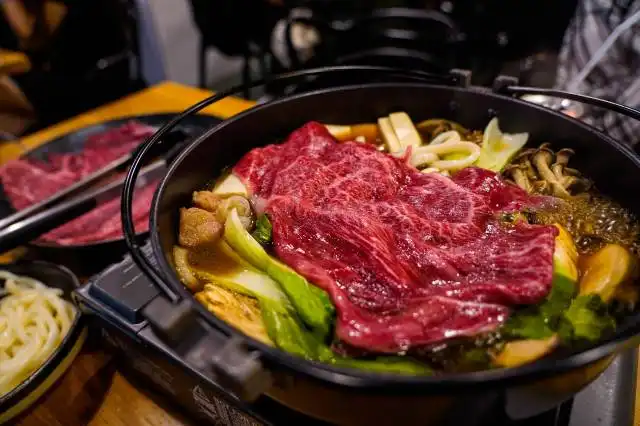Start a Deli
Building Your Sandwich Empire: Unleash the Deli Owner in You
| Updated


DELI
Dive right into the sandwich-slinging scene with your own deli business - a perfect venture for those with a passion for pastramis and a fondness for focaccia! A deli is a retail establishment that sells ready-to-eat food items like meats, cheeses, sandwiches, and salads, often made to order while the customer waits. Win over the lunch crowd with your delectable deli, showcasing your secret sandwich recipes and an array of cheese. Set yourself apart by sourcing unique, high-quality ingredients and providing a cozy, welcoming ambiance.
Jump to Business Plan
RELATED BUSINESS IDEAS
Browse ALL Food & Beverage Entrepreneurship Business Ideas
Discover Your Perfect Domain
Unlock the door to your online success with our hand-picked selection of premium domain names. Whether you're starting a new venture or rebranding an existing one, the right domain can set the tone for your digital presence. Browse through our curated list, each with its unique potential to enhance your brand's visibility and credibility.
DELI MINI BUSINESS PLAN
This a quick reality check to help you identify the strengths and weaknesses of your business concept before you dive in.
Expected Percent Margin:
- Gross Margin: 60-70%
- Net Profit Margin: 3-8%
Earnings Expectations:
- Daily Earnings: $500 - $1000
- Weekly Earnings: $3500 - $7000
- Monthly Earnings: $14,000 - $28,000
- Annual Earnings: $168,000 - $336,000
Actions to Hit Those Numbers:
Inventory Management:
- Initial Investment: At least $10,000-$30,000 for quality ingredients and deli equipment.
- Supplier Network: Develop relationships with local and reliable food suppliers.
Marketing and Customer Acquisition:
- Social Media: Regularly update your social media with new menu items and special events.
- Local Advertising: Participate in local food festivals and events to create brand awareness.
Sales and Customer Experience:
- Staffing: Employ experienced staff to ensure food quality and customer satisfaction.
- Regular Menu Updates: Offer a variety of dishes and regularly update your specials to keep customers excited.
Cost Control:
- Rent: Opt for a location where rent does not exceed 8-10% of your expected monthly sales.
- Utilities and Maintenance: Budget around $500-$700 per month.
Business Operations:
- Menu Pricing: Ensure your price points adequately cover ingredient and operational costs.
- Open Hours: Open 7 days a week, targeting lunch and dinner rushes.
- Transaction Volume: Aim for 50-100 transactions per day at an average sale price of $10-$20.
These are generalized estimations and can vary depending on location, competition, and individual business strategies. Always consult with a financial advisor for personalized advice.
NOT WHAT YOU HAD IN MIND? Here are more ideas



Browse ALL Food & Beverage Entrepreneurship Business Ideas
Grab Your Business Website Name
Before you get caught up in the whirlwind of setting up your business, invest in a domain name. It's a small but significant step that lays the foundation for your brand and makes it easier for customers to find and trust you. Just like you wouldn't build a house without securing the land first, don't build a business without securing your domain name.
"Why? Can't that wait?" Here's why it shouldn't
Step 1: Determine if the Business is Right for You
Before starting a deli, it is important to determine if the business is right for you. This includes researching the startup and ongoing expenses associated with running a deli. It is important to understand the costs associated with opening and operating a deli, as well as the potential profits.
Breakdown of Startup Expenses
When starting a deli, there are a number of startup expenses that need to be taken into consideration. These include the cost of purchasing or leasing a space, purchasing equipment, obtaining licenses and permits, and hiring staff. Additionally, there may be costs associated with marketing and advertising the deli.
Breakdown of Ongoing Expenses
In addition to startup expenses, there are ongoing expenses associated with running a deli. These include the cost of purchasing food and supplies, paying staff, and paying rent or mortgage payments. Additionally, there may be costs associated with maintaining the deli’s equipment and marketing and advertising the deli.
Examples of Ways to Make Money
When running a deli, there are a number of ways to make money. These include selling food and drinks, offering catering services, and hosting events. Additionally, delis may offer delivery services or sell products such as gift cards or merchandise. It is important to research the local market to determine which services and products will be most profitable.
Step 2: Name the Business
When it comes to naming a deli, there are a few things to consider. First, the name should be catchy and memorable. It should also be unique and not too similar to other delis in the area. Additionally, the name should reflect the type of food that is being served. For example, if the deli is serving Italian food, the name should reflect that. Furthermore, the name should also be easy to spell and pronounce. Finally, make sure to check that the name is not already taken or trademarked.
Research the Name
Once you have come up with a few potential names for the deli, it is important to do some research. First, make sure to check with the local government to ensure that the name is not already taken. Additionally, it is important to check online to make sure that the name is not already trademarked. Furthermore, it is also important to check with the local chamber of commerce to make sure that the name is not already in use. Finally, make sure to check with the local newspaper to make sure that the name is not already in use.
Finalize the Name
Once you have done the research and have determined that the name is available, it is time to finalize the name. Make sure to double check the spelling and pronunciation of the name. Additionally, make sure to check with the local government to make sure that the name is properly registered. Furthermore, make sure to check with the local chamber of commerce to make sure that the name is properly registered. Finally, make sure to check with the local newspaper to make sure that the name is properly registered.
Step 3: Obtain Licenses and Permits
Before opening a deli, it is important to obtain the necessary licenses and permits. Depending on the location, the licenses and permits required may vary. Generally, a business license, food service license, and health permit are required. Additionally, a seller’s permit may be necessary to purchase food items from suppliers. It is important to check with the local government to ensure all necessary licenses and permits are obtained.
Alcohol License
If the deli plans to serve alcohol, an alcohol license is necessary. Depending on the location, the process to obtain an alcohol license may be lengthy and expensive. It is important to research the requirements and cost of obtaining an alcohol license before deciding to serve alcohol. Additionally, it is important to be aware of the laws and regulations regarding the sale of alcohol.
Insurance
Insurance is an important part of running a deli. Insurance can help protect the business from potential lawsuits and other liabilities. Generally, a business owner’s policy is necessary to cover the building, equipment, and liability. Additionally, workers’ compensation insurance is necessary to cover employees in case of an injury. It is important to research the types of insurance necessary for the business and obtain the necessary coverage.
Step 4: Find a Location
When choosing a location for a deli, there are several factors to consider. First, the location should be in an area with a lot of foot traffic. This will help ensure that the deli is seen by potential customers. Second, the location should be close to other businesses that can help bring in customers, such as a grocery store or a shopping mall. Third, the location should have enough space to accommodate the deli and its customers. Finally, the location should be accessible to customers, with plenty of parking and public transportation options.
Securing a Lease
Once a suitable location has been identified, the next step is to secure a lease. Before signing a lease, it is important to read the terms and conditions carefully. The lease should include the length of the lease, the amount of rent, and any other fees associated with the lease. It is also important to make sure that the landlord is willing to work with the deli owner to make any necessary improvements to the property. Additionally, the deli owner should make sure that the lease includes a clause that allows them to terminate the lease if the business does not succeed.
Step 5: Design the Deli
Layout of the Deli
When designing the deli, it is important to consider the size of the space, the number of customers that will be served, and the type of food that will be served. The layout should be designed to maximize efficiency and customer satisfaction. Considerations should include the placement of the kitchen, the seating area, the counter, and the display cases. It is important to create a space that is inviting and comfortable for customers.
Design Considerations
When designing the deli, it is important to consider the overall aesthetic of the space. This includes the color scheme, the type of furniture, and the type of lighting. It is important to create a space that is inviting and comfortable for customers. Additionally, it is important to consider the type of equipment that will be needed to run the deli. This includes refrigerators, ovens, and other cooking equipment. It is also important to consider the type of food that will be served and the type of display cases that will be needed to showcase the food. Finally, it is important to consider the type of signage that will be needed to advertise the deli.
Step 6: Purchase Equipment
When starting a deli, there are certain pieces of equipment that are essential for the business to function. This includes a commercial refrigerator, a commercial oven, a slicer, a grinder, a mixer, and a cash register. These pieces of equipment are necessary for the deli to store, prepare, and serve food. Additionally, it is important to purchase high-quality equipment that is reliable and will last for a long time.
Additional Equipment
In addition to the essential equipment, there are other pieces of equipment that can be purchased to make the deli more efficient. This includes a food processor, a toaster oven, a microwave, and a deep fryer. These pieces of equipment can help the deli prepare food more quickly and efficiently. Additionally, it is important to purchase equipment that is easy to use and maintain.
Supplies
In addition to equipment, there are also supplies that need to be purchased for the deli. This includes items such as utensils, plates, cups, napkins, and condiments. It is important to purchase supplies that are durable and easy to clean. Additionally, it is important to purchase supplies that are aesthetically pleasing and will help create a positive atmosphere in the deli.
Inventory
Finally, it is important to purchase inventory for the deli. This includes items such as meats, cheeses, breads, and other ingredients. It is important to purchase high-quality ingredients that are fresh and will help create delicious dishes. Additionally, it is important to purchase ingredients in bulk to save money. It is also important to purchase ingredients that are in season, as this will help keep costs down.
Step 7: Hire Employees
Finding and hiring the right employees is essential to the success of any business. When hiring employees, it is important to consider their qualifications, experience, and personality. It is also important to create a job description that outlines the duties and responsibilities of the position. Additionally, it is important to consider the cost of hiring employees, such as wages, benefits, and other costs associated with the hiring process.
Training Employees
Once the right employees are hired, it is important to provide them with the necessary training to ensure that they are able to perform their job duties. This includes providing them with an orientation to the business, teaching them about the products and services offered, and providing them with the necessary tools and resources to do their job. Additionally, it is important to provide ongoing training and development opportunities to ensure that employees are up to date on the latest industry trends and practices.
Setting Expectations
When hiring employees, it is important to set expectations for their performance. This includes setting goals, providing feedback, and creating a system for measuring performance. Additionally, it is important to create a system for rewarding employees for their performance. This could include bonuses, pay increases, or other incentives.
Creating a Positive Work Environment
Creating a positive work environment is essential to the success of any business. This includes providing employees with a safe and comfortable workplace, offering competitive wages and benefits, and creating a culture of respect and appreciation. Additionally, it is important to provide employees with the necessary resources and support to do their job. This could include access to technology, training opportunities, and other resources.
Step 8: Market the Deli
When it comes to marketing the deli, there are a few different strategies that can be employed. First, it is important to create a website and social media presence. This will allow potential customers to find out more about the deli and what it offers. Additionally, it is important to create a logo and slogan that will help to differentiate the deli from the competition. Additionally, it is important to create a loyalty program that will reward customers for their patronage. This will help to encourage repeat business.
Advertising the Deli
Once the deli is up and running, it is important to advertise it to the local community. This can be done through print, radio, and television advertising. Additionally, it is important to create promotional materials such as flyers and business cards that can be distributed. Additionally, it is important to create relationships with local businesses and organizations that can help to spread the word about the deli. Finally, it is important to create a presence at local events and festivals to help get the word out about the deli.
Step 9: Open the Deli
Before opening the deli, it is important to make sure that all the necessary preparations have been taken care of. This includes ensuring that all the necessary permits and licenses have been obtained, that all the necessary equipment has been purchased, and that all the necessary staff have been hired. It is also important to make sure that the deli has been properly stocked with all the necessary ingredients and supplies, and that the deli has been properly cleaned and organized. Additionally, it is important to make sure that all the necessary marketing materials have been created and distributed, and that all the necessary advertising has been done. Finally, it is important to make sure that the deli is ready to open its doors to the public.
Grand Opening
Once all the necessary preparations have been taken care of, it is time to plan the grand opening of the deli. This should include inviting friends, family, and members of the local community to the opening, as well as any local press or media outlets. Additionally, it is important to make sure that the grand opening is well-publicized, so that as many people as possible are aware of the deli’s opening. Finally, it is important to make sure that the grand opening is a fun and exciting event, so that customers will be excited to come back to the deli in the future.
EXPLORE MORE CATEGORIES
Browse ALL Business Idea Categories
TAKE THE NEXT STEPS










